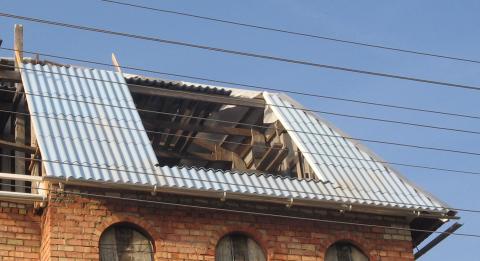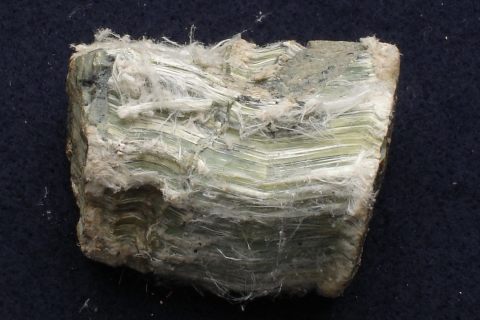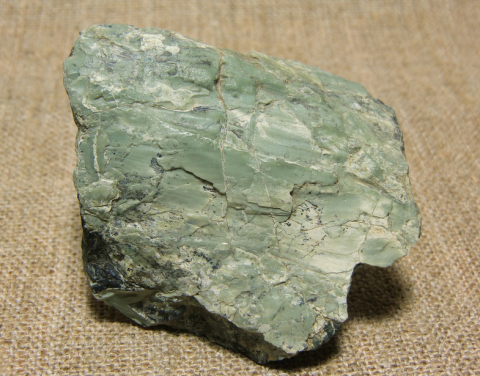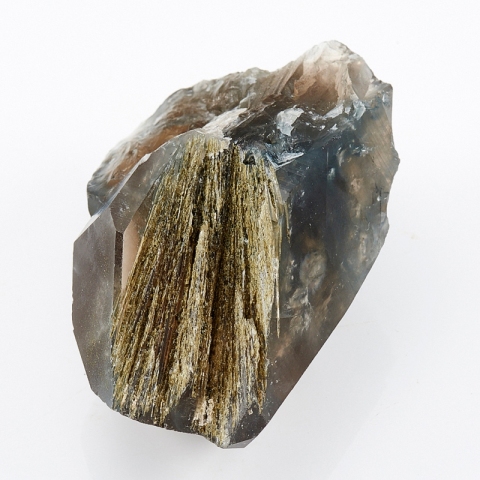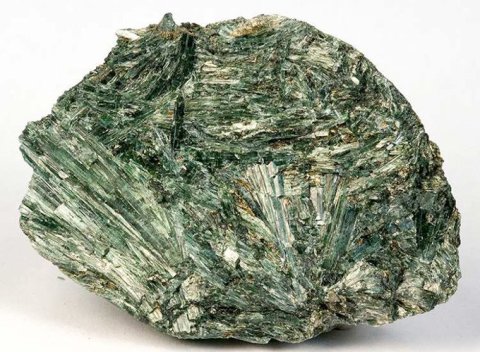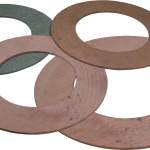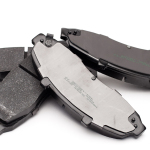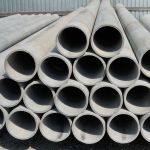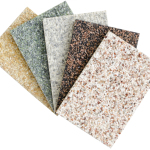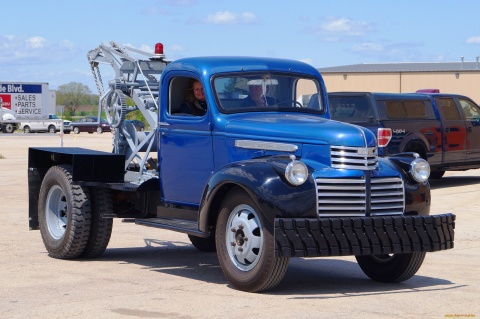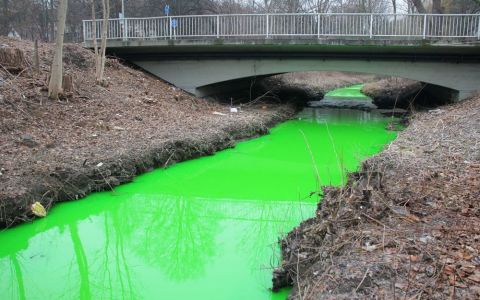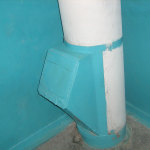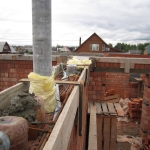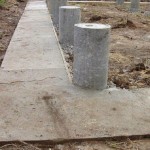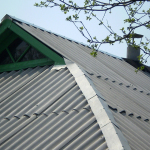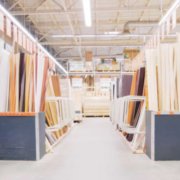Is there any future for asbestos? We are looking for an answer to a burning question
The campaign against the use of asbestos in construction began 40 years ago, in the seventies, and is still supported by some countries. In those years, 4.5 million tons of asbestos were produced all over the world, half of which was in the Soviet Union. And, despite the impressive volumes, many countries constantly felt its shortage.
So what is the reason for such a sudden "dislike" for this natural, most valuable fire-resistant mineral, which is an indispensable raw material in the production of pipes, slate, foam concrete, facade panels, brake linings, grouting mortars, sealants - and much more?
The content of the article
Why is asbestos under fire
The Asbestos War dragged on, and has not yet ended. How did she even start? As usual, information about the extraordinary harm of this ore raw material came to us from Western countries.
Note! At the same time, a flood of expensive new roofing and wall building materials poured out from there, designed to replace the cheap, and therefore accessible to everyone, materials from asbestos. This suggests a custom campaign that happens in almost all industries.
Everything is as always: at first they intimidate people, and then they offer an alternative. Of course, there is no smoke without fire, and there is some truth in all this. But many do not even bother to figure out what is happening. Let's try to shed light on this situation, but without knowledge of the types and characteristics of asbestos, this is impossible. Therefore, let's start with them.
What is asbestos
The term “asbestos” does not mean a specific material, but a whole group of minerals, which, by the way, have completely different properties. They are divided into two main groups: serpentine and amphibole.
In the first group there are only two types of minerals: chrysotile, which is the most valuable (from an industrial point of view) of all types of asbestos, and antigorite, which has completely different properties.
| A variety of asbestos | Material Basics |
| This white fibrous asbestos is the safest of all existing species. It belongs to the group of layered hydrosilicates, and by its chemical composition it is water-containing magnesium hydrosilicate. This type of asbestos is the most common, and it is extracted in our country. One of the largest deposits is Bazhenovskoye, located in the Urals, sixty kilometers from Yekaterinburg. Advantages:
Chrysotile is well formulated with binders (cement, gypsum), which allows it to be used in almost all areas of construction and industry. In addition to Russia, it is mined in China, Arizona - one of the US states, Zimbabwe. | |
| It is a dense and solid mineral with a scaly structure. It is because of it that it does not have such industrial value as chrysolite, and is only its undesirable companion. However, the antigorite has a beautiful texture, due to which it is used as an ornamental stone - accordingly, its price is much higher. In construction, it can be used for cladding instead of marble, or together with marble. |
The second group of asbestos is more extensive.It includes as many as five minerals, which are silicates with more complex compounds.
It:
| A variety of asbestos | Material Basics |
| Silicate of iron and sodium. Due to its bluish-blue hue, crocidolite is also called blue asbestos. Of the entire group of these minerals, it has the least strength, and its fibers are larger than that of chrysotile. Crocidolite is acid resistant, but has many more shortcomings. In particular, he cannot boast such fire resistance as chrysotile. But the main thing is that it is highly contaminated with impurities, which immediately reduces its raw material value. Among the pollutants is the aromatic hydrocarbon benzpyrene, which is classified as a first class in danger. For this reason, the use of blue asbestos for the manufacture of building materials is simply dangerous. Many countries recognized it as an industrial pesticide, but some use it as an ornamental stone. Its deposits are in South Africa (higher grade), in the Urals and in Ukraine. | |
| In amosite, in addition to a high iron content, aluminum, calcium, and magnesium are also present. It has acid resistance, is quite durable, but due to a certain degree of viscosity it is of no interest either to industry or to stone processing. | |
| Silicate of magnesium and iron, with fairly large fibers. It is a satellite in the deposits of talc, quartz, ore minerals, therefore, it is found almost everywhere. It is mainly used in the chemical industry. | |
| Silicate of calcium and magnesium. It is a crystal with a needle, prismatic or columnar structure. Characteristic colors are all shades of green and brown, which is why it is also called “cat's eye.” Although there are also colorless rocks that crystallize in granite, quartz, feldspar, rock crystal, as well as pearl white and gray. Due to its glass luster and silky surface, it is actively used in the jewelry industry. | |
| Silicate of iron, calcium and magnesium. This is a sparingly soluble mineral that is found in nature with garnets, quartz, talc, and chlorite. It has different shades of green, gray, or white. Actinolite is flame retardant, and has a high acid resistance, therefore it is used not only as an ornamental stone, but also finds application in many industries. In our country it is found not only in the Urals, but also in the Primorsky Territory, Karelia, and the Sea of Azov. But gem-quality stone is mined in India, Madagascar, Afghanistan, Tanzania. |
As you can see, only one type of asbestos minerals - namely: chrysotile, is suitable for use as a raw material for the production of building materials. And Russia is one of the few countries where it is mined.
Analyze the situation
Asbestos of the amphibole group does not possess such valuable qualities as serpentine ones. In the best case, they are generally not suitable for processing, and in the worst, they are simply dangerous. All of them are acid-resistant, and when their dust enters the acidic environment of the lungs, they do not dissolve, but accumulate, causing various diseases.
However, they were used in Europe at a time when asbestos had not yet been persecuted. They were insulated with ceilings and walls, coated with metal structures, used to create synthetic materials.
It’s not that this was done deliberately: they simply used what was the local raw material at the plants — and there are no chrysotile deposits anywhere in Europe. The leadership of these countries was easier to ban asbestos, citing its harmfulness, than to spend money on the study of its properties - and even more so, to import such raw materials. However, there is no silver lining.
What turned out to be a ban for Russia
As the European Union advocated for a widespread and indefinite ban on asbestos, in many countries outside of it, the demand for these raw materials has grown many times. Naturally, the opponents of such a decision were led by countries where chrysotile production was established, who did not want to close dozens of enterprises, and lose tens of thousands of jobs.
In the Sverdlovsk region there is the city of Asbest, in which the enterprise for the extraction of the mineral of the same name is a city-forming. It has existed for more than a hundred years, and it has no less long-livers and people of retirement age than in any other region.
An increase in the incidence of cancer, which opponents of asbestos material shout about, is also not observed. So the horror stories about his extraordinary harmfulness are greatly exaggerated.
- Paronite gaskets
- Brake pads
- Asbestos cement pipes
- Flat slate
- Facade cladding (fiber cement panels)
- Asbestine thermal insulation (vermiculite)
Chrysotile deposits are also found in the Orenburg region, and in the Republic of Tuva. To ban it for these regions means the closure of six plants, the reorientation of which would require a lot of time and money. Only one thing remains for their leadership and trade unions: to prove the safety of their products, a small list of which is presented above.
Note! In particular, “under fire” for some reason, automobile brake pads fell. Is it not because it is more profitable for someone to increase sales of more expensive blocks with a ceramic or metal composite work surface?
Since January 2012, countries belonging to the then EurAsEC, the use of chrysotile in brake linings has been banned. Today they are not used for the factory equipment of new cars anywhere, including in Russia. But here, for the repair of old "Volzhanka" and "Lada", they are allowed.
Although many still do not understand what the problem is, it is, in principle, impossible to extract asbestos dust from the linings. And then, exposed to high temperatures, chrysotile fibers are transformed into a completely different substance - forsterite, which generally has no carcinogenic properties. For that matter, metal dust, or, for example, animal hair, can be even more dangerous for a person.
Are there any worthy alternatives to chrysotile?
Despite the fact that 65 countries bought asbestos in the USSR, the solid volume of its production did not cover the ever-growing deficit. In this regard, our scientists began to actively work on finding a worthy alternative.
By the beginning of perestroika, something had been created, but sales problems arose. In addition, new materials exceeded asbestos in cost, which was their significant disadvantage. In terms of functionality, they also could not compete with chrysotile - and this is already fraught with serious consequences.
And here you have a good example. In January 1986, in Florida (USA), just a 73-second flight, the space shuttle Challenger crashed. The expert opinion of American specialists said that the reason for this was the replacement of asbestos seals with asbestos-free seals that could not withstand overheating.
- In the same America, after the abolition of brake linings made of asbestos, automobile companies began to notice a significant increase in accidents. Therefore, today, the company DM (General Motors), returned asbestos braking units not only for all heavy vehicles, but also for comfortable cars.
- From the point of view of the state’s economy, replacing asbestos with alternative materials is not beneficial not only to Russia, but also to countries where it is not mined.
- EU economists predicted that in poor European countries such as Greece, Ireland, as well as Spain and Portugal, a complete ban on asbestos would lead to a general decrease in living standards, unemployment.
- In spite of this, they are simply imposed on anyone without profitable asbestos-free technologies.
There is only one conclusion: the main reason for the emergence of an anti-asbestos company is not the harmfulness of the material at all, but the desire of those countries that do not have them to market alternative materials that are not capable of competing with asbestos in other ways.
They wage war under the guise of ecology - knowing for sure that the more absurd a lie is, the sooner people will believe in it. Some people are even sure that asbestos is radioactive. Although, on the contrary, it is able to protect against radiation.
Is the beast so terrible as it is painted
Regarding the negative characteristics of asbestos, the emphasis is on the fact that it causes a disease such as asbestosis. Predict almost apocallipsis, which, by the way, is constantly carried over to later dates.
What can I say? In the list of harmful substances used in various industries, and representing a danger to workers in contact with them, there are at least two hundred items.
- Moreover, according to American data, asbestos is by no means in the first place, but somewhere in the second hundred. And there are at least 1,000 different technologies in which non-compliance with safety precautions leads to the same result. So - cancel them all? What then to speak about the chemical enterprises polluting the environment all over the world?
- It is in Europe, in whose territories there are very few minerals, and where the chemical industry is developing the most, is it beneficial to discredit asbestos. All the nonsense about him is supported only by countries that cherish the dream of being admitted to the European Union.
- The United States, oddly enough, has complete unity with Russia on the asbestos issue. Most products made from chrysotile are allowed there. And why be surprised - because in their Arizona a large field is working.
- The first ban in 1986 was introduced by Norway and Denmark, then Italy and the Netherlands - in that order. Then they were joined by Sweden and Germany, then France and Belgium.
- And what - did it help them a lot in disease prevention? All of their alternative materials of chemical origin only provoked a surge in allergies - including among builders. In Sweden, the term “allergenic houses” even appeared, which became such as a result of the excessive use of plastics.
- But our asbestos-cement partitions, which are present in all high-rise buildings of the Soviet period of construction, serve people of 50-70 years old and do not create problems for anyone. Well, building materials made using asbestos cannot harm human health! After all, how much dust is this? Moreover, the surfaces are plastered and painted.
- If you believe the arguments of the European "oracles", then in our country, which has been increasing chrysotile production for more than a hundred years, and increasing the production of products based on it, no one should have remained alive.
- Nevertheless, we live and live - and many, many more countries that buy all of this from us. And you can only laugh at crazy forecasts. And in order not to get lung cancer, humanity only needs to quit smoking, since according to all countries of the world, it is tobacco smoke that provokes this disease in 90% of cases.
- Asbestos cement chute
- Asbestos fire resistance is the biggest advantage for chimneys
- Tube foundation
- Slate roofing is the most durable
Today, the world is still divided into two camps: asbestos supporters, and its opponents. Not only economics, but also politics has long intervened in scientific disputes. Opponents do not want to make a distinction between amphibole asbestos and chrysotile, although the second, with due regard to industrial safety, is completely harmless.
In Russia, by the way, only chrysotile is used as a raw material in production. And what would we do without a cheap and durable slate; pipes perfectly suitable for the manufacture of pile foundations, chimneys, drainage systems, garbage chutes; inexpensive and effective thermal insulation? Replacing them is not so easy - and is it necessary?
